*NURSING > QUESTIONS & ANSWERS > ATI Pharmacology (A GUARANTEED) (All)
ATI Pharmacology (A GUARANTEED)
Document Content and Description Below
ATI Pharmacology (A GUARANTEED) ATI Pharmacology IMPORTANT LAB VALUES • Sodium (Na): 136-145 mEq/L • Calcium: 9.0-10 mg/dL • Chloride: 98-106 mEq/L • Bicarb HCO3: 21-28 mEq/L • Pot... assium: 3.5-5.0 mg/L • Phosphorus PO4 : 3.0-4.5 mg/dL • Magnesium: 1.3- 2.1 mEq/L • Cholesterol: o Total <200mg/dL o LDL ("bad") <100 o HDL ("good) >40 o Triglycerides <150mg/dL • Liver enzymes o ALT/SGPT 8-20 units/L o AST/SGOT 5-40 units/L o ALP 42-128 units/L o Total protein 6-8 gm/dL • Pancreatic enzymes o Amylase 56-90 IU/L o Lipase 0-110 units/L o Prothrombin time 0.8-1.2 • Glucose: Preprandial (fasting) 70-110 mg/dL Postprandial 70-140 mg/dL • RBC: Females 4.2-5.4 million/uL; Males 4.7-6.1 million /uL • WBC: 5000 -10,000 • Iron: Females 60-160 mcg/dL; Males 80-180 mcg/dL • Platelets: 150,000-450,000 • Hemoglobin (Hgb): Females 12-16 g/dL; Males 14-18 g/dL • Hematocrit (Hct): Females 37-47%;Males 42-52% • Prothrombin Time (PT): 11-14 seconds: therapeutic range 1.5-2x normal or control value • Urine specific gravity: 1.015-1.030 • Urine pH: average 6.0; range 4.6-8.0 • BUN: 10-20 mg/dL • Creatinine: female 0.5-1.1, males 0.6 - 1.2 mg/dL; • Creatinine phosphokinase MB (CK-MB): normal 30-170 units/L *increase 4-6 hrs after MI and remains elevated 24-72hrs • Troponin normal: <0.2 ng/dL *gold standard for MI - Safe Medication Administration and Error Reduction: Reviewing a Medication Administration Record (RN QSEN - Teamwork and Collaboration, Active Learning Template - Nursing Skill, RM Pharm RN 7.0 Ch. 2) 1) Report all errors, and implement corrective measures immediately 2) Complete an incident report within the time frame the facility specifies, usually 24 hr. 3) Do not reference or include this report in the client's medical record 4) Evaluate clients' responses to medications, and document and report them. 5) Identify side and adverse effects, and document and report them. Chapter 12 - Substance Use Disorders: Therapeutic effect of chlordiazepoxide (Ch. 12 pg.85) - Substance Use Disorders: Smoking cessation using bupropion (Ch. 12 pg. 87) - Substance Use Disorders: Treatment for Cocaine Toxicity (Active Learning Template - System Disorder, RM Pharm RN 7.0 Ch. 12) 1) First line treatment = Benzodiazepines (to reduce CNS & cardiovascular effects) 2) Chlordiazepoxide, diazepam, lorazepam, clorazepate, oxazepam 3) Provide seizure precautions 4) Manifestations include nausea; vomiting; tremors; restlessness and inability to sleep; depressed mood or irritability; increased heart rate, blood pressure, respiratory rate, and temperature; diaphoresis; and tonic‑clonic seizures. Illusions are also common 5) Monitor vitals and neurological status on a regular basis Chapter 13 - Chronic Neurologic Disorders: Adverse effects of neostigmine (Ch. 13 pg. 91) Adverse effects: Excessive muscarinic stimulation Cholinergic crisis - Chronic Neurologic Disorders: Medications that interact with Carbamazepine (Ch. 13 pg. 99) - Carbamazepine causes a decrease in the effects of oral contraceptives and warfarin due to stimulation of hepatic medication-metabolizing enzymes. - Grapefruit juice inhibits metabolism, and thus increases carbamazepine levels. - Phenytoin and phenobarbital decrease effects of carbamazepine. - Chronic Neurologic Disorders: Adverse Effects of Phenytoin (RN QSEN - Safety, Active Learning Template - Medication, RM Pharm RN 7.0 Ch. 13) 1) CNS effects: Nystagmus, sedation, ataxia, double vision, cognitive impairment 2) Gingival hyperplasia: Softening and overgrowth of gum tissue, tenderness, and bleeding gums (consider folic acid supplement) 3) Skin rash (stop medication if rash appears) 4) Cardiovascular effects: dysrhythmias, hypotension (administer slow; 50 mg/min and in dilute solution) 5) Endocrine and other effects: Coarsening of facial features, hirsutism, and interference with vitamin D metabolism (consume enough Vitamin D) 6) Interference with vitamin K‑dependent clotting factors causing bleeding in newborns. - Miscellaneous Central Nervous System Medications: Treating Malignant Hyperthermia (Active Learning Template - Medication, RM Pharm RN 7.0 Ch. 15) 1) Depolarizing neuromuscular blockers: Succinylcholine 2) Manifestations include muscle rigidity accompanied by increased temperature, as high as 43°C (109.4°) 3) Administer oxygen at 100%. 4) Initiate cooling measures including administration of iced 0.9% sodium chloride, applying a cooling blanket, and placing ice bags in groin and other areas 5) Administer dantrolene to decrease metabolic activity of skeletal muscle. - Airflow Disorders: Therapeutic Action of Montelukast (Active Learning Template - Medication, RM Pharm RN 7.0 Ch. 17) 1) Leukotriene modifiers: suppress the effects of leukotrienes, thereby reducing inflammation, bronchoconstriction, airway edema, and mucus production. 2) Long‑term therapy of asthma in adults and children, and to prevent exercise‑induced bronchospasm 3) Depending on therapeutic intent, effectiveness is evidenced by long‑term control of asthma 4) Advise clients to take montelukast once daily at bedtime. 5) For exercise‑induced bronchospasm, take 2 hr. before exercise. Instruct clients taking daily montelukast to not take an additional dose for exercise induced bronchospasm - Upper Respiratory Disorders: Client Teaching Prior to Allergy Testing (Active Learning Template - Medication, RM Pharm RN 7.0 Ch. 18) 1) Medications that can interfere with skin tests include: antihistamines, Tricyclic antidepressants, heartburn medications, asthma medication omalizumab (Xolair) 2) May need to discontinue certain meds 10 days prior 3) If you are running a fever or have an attack of hay fever or asthma, testing should be delayed 4) Do not change your diet before the test. - Medications Affecting Blood Pressure: Titrating Continuous Nitroprusside Infusion (RN QSEN - Safety, Active Learning Template - Medication, RM Pharm RN 7.0 Ch. 20) 1) Nitroprusside (centrally-acting vasodilator) 2) Direct vasodilation of arteries and veins resulting in rapid reduction of blood pressure (decreased preload and after load 3) Used for hypertensive crisis 4) Administer medication slowly because rapid administration will cause blood pressure to go down to rapidly 5) Prepare medication by adding to diluent for IV infusion. 6) Protect IV container and tubing from light & Discard medication after 24 hr. Angina Chapter 22 (pg. 169) Self-administration of nitroglycerine patch (pg. 170) Client teaching for a new prescription of sublingual nitroglycerin PROTOTYPE: Nitroglycerin (NTG) Oral extended-release capsules Sublingual tablet Translingual spray Topical ointment Transdermal patch Intravenous Isosorbide dinitrate (Sublingual) Isosorbide mononitrate (PO) Adverse Effects: Headache: - Instruct clients to use aspirin or acetaminophen to relieve pain - Clients should notify the provider if headache does not resolve in a few weeks. Dosage can be reduced. Orthostatic hypotension: - Advise clients to sit or lie down if experiencing dizziness or faintness. - Clients should avoid sudden changes of position/rise slowly. Reflex Tachycardia: - Monitor vitals. - Administer a beta-blocker such as metoprolol if needed. Tolerance: - Use lowest dose needed to achieve effect. - Take all long-acting forms of nitroglycerin with a medication-free period each day. This action reduces the risk of tolerance. Contraindications/ Precautions: - Pregnancy Risk Category C. - This medication is contraindicated in clients who have hypersensitivity to nitrates. - Nitroglycerin is contraindicated in clients who have severe anemia, closed-angle glaucoma and traumatic head injury because the medication can increase intracranial pressure. - Use cautiously in clients taking antihypertensive medications and clients who have hyperthyroidism or renal or liver dysfunction. Nursing evaluation of medication effectiveness: - Prevention and termination of acute anginal attacks - Long-term management of stable angina. - Control of perioperative blood pressure. - Control of heart failure following acute MI. - In chronic stable exertional angina, nitroglycerin dilates veins and decreases venous return (preload), which decreases cardiac oxygen demand. - Use this rapid‑acting nitrate at the first indication of chest pain. Do not wait until pain is severe. - Use prior to activity that is known to cause chest pain, such as climbing a flight of stairs. - Place the tablet under the tongue and allow it to dissolve - Store tablets in original bottles, and in a cool, dark place. - Medications Affecting Cardiac Rhythm: Ventricular Dysrhythmia (Active Learning Template - Medication, RM Pharm RN 7.0 Ch. 23) 1) Antidysrhythmic meds class IB (Lidocaine) 2) Decrease electrical conduction, Decrease automaticity, Increase rate of repolarization 3) Short‑term use only for ventricular dysrhythmias 4) Administer phenytoin to control seizure activity. 5) Use cautiously in clients who have liver and kidney dysfunction, second‑degree heart block, sinus bradycardia, and heart failure. [Show More]
Last updated: 1 year ago
Preview 1 out of 20 pages
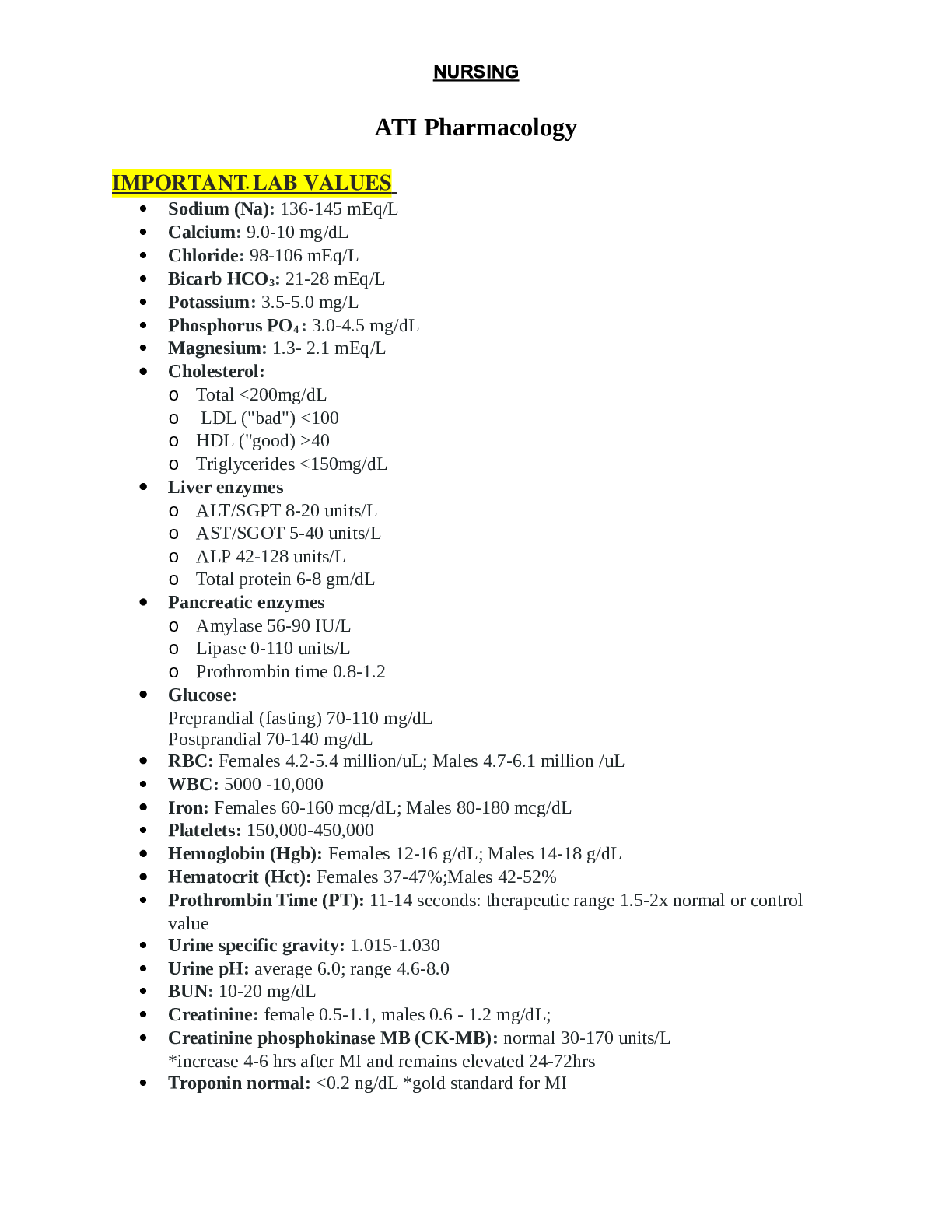
Reviews( 2 )

by Norma Yarns · 3 years ago
Thank you. Highly appreciated by examdomain. 3 years ago

by examdomain · 3 years ago
Document information
Connected school, study & course
About the document
Uploaded On
Apr 11, 2021
Number of pages
20
Written in
Additional information
This document has been written for:
Uploaded
Apr 11, 2021
Downloads
1
Views
93

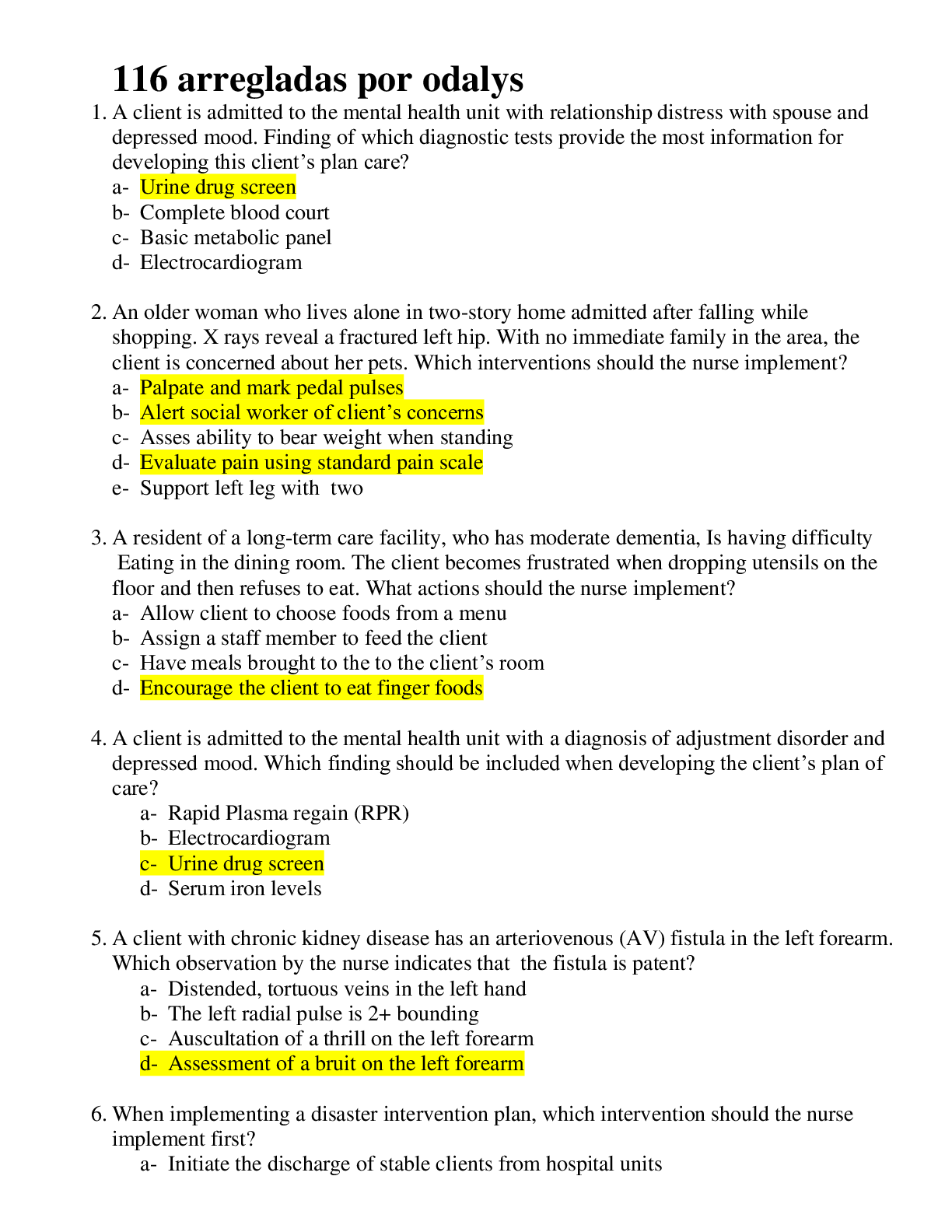
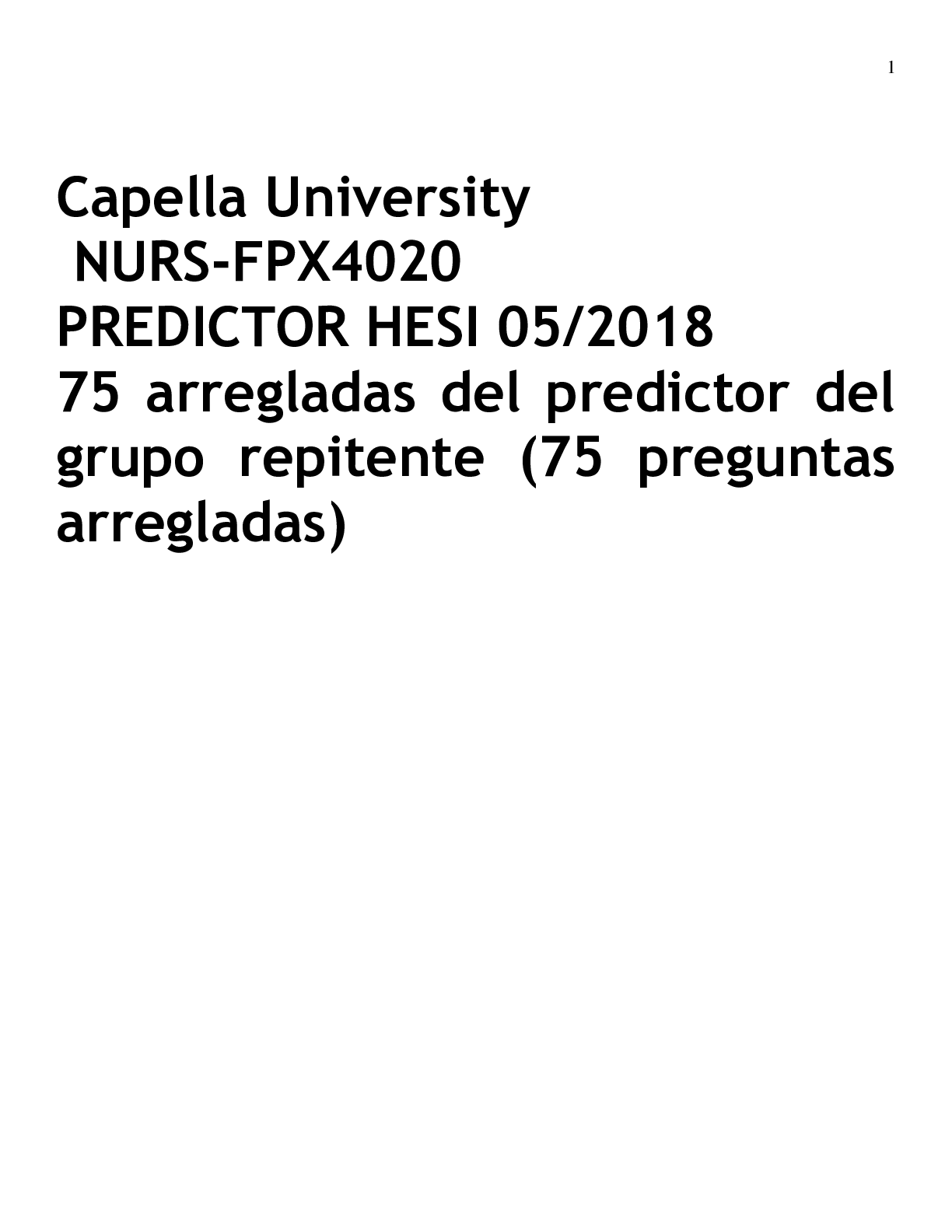

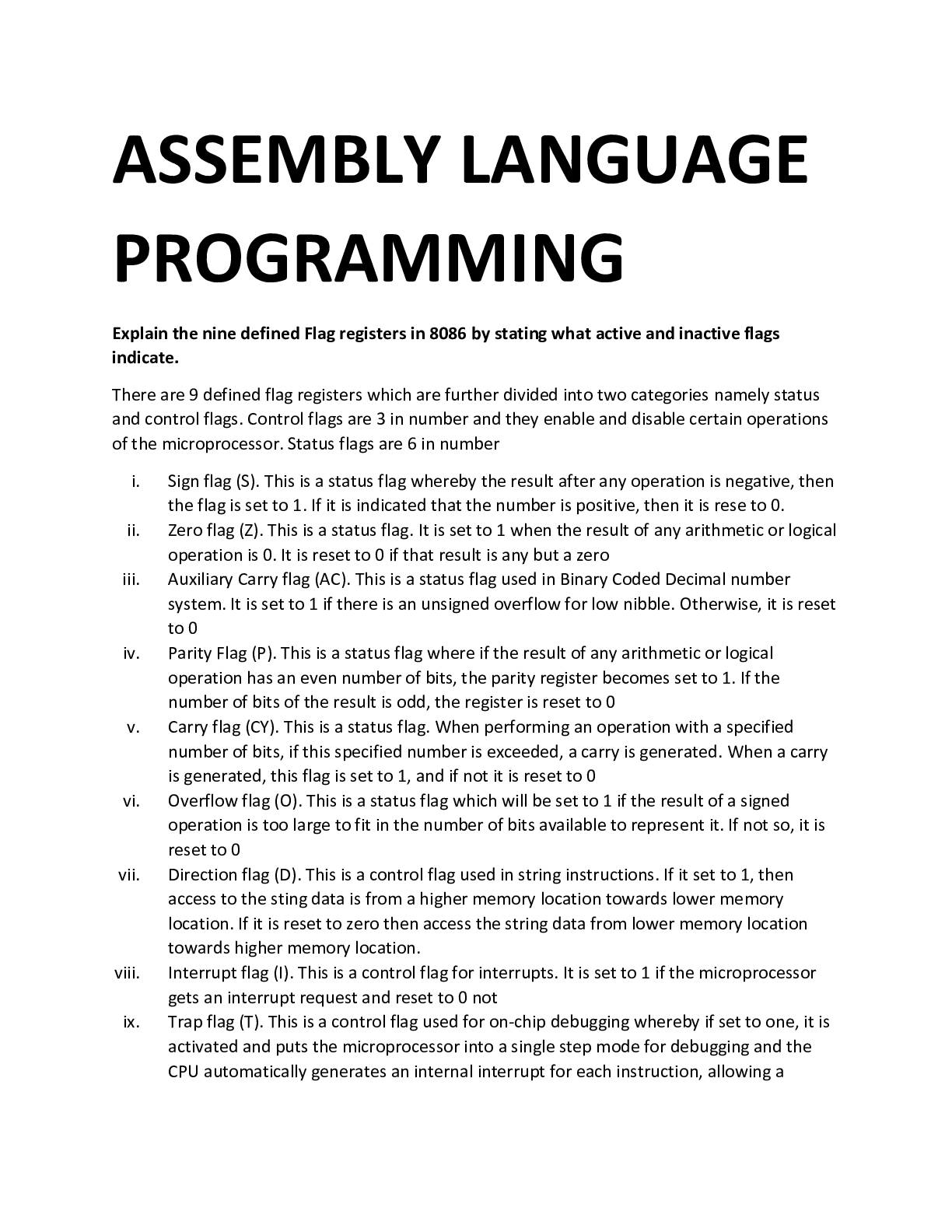
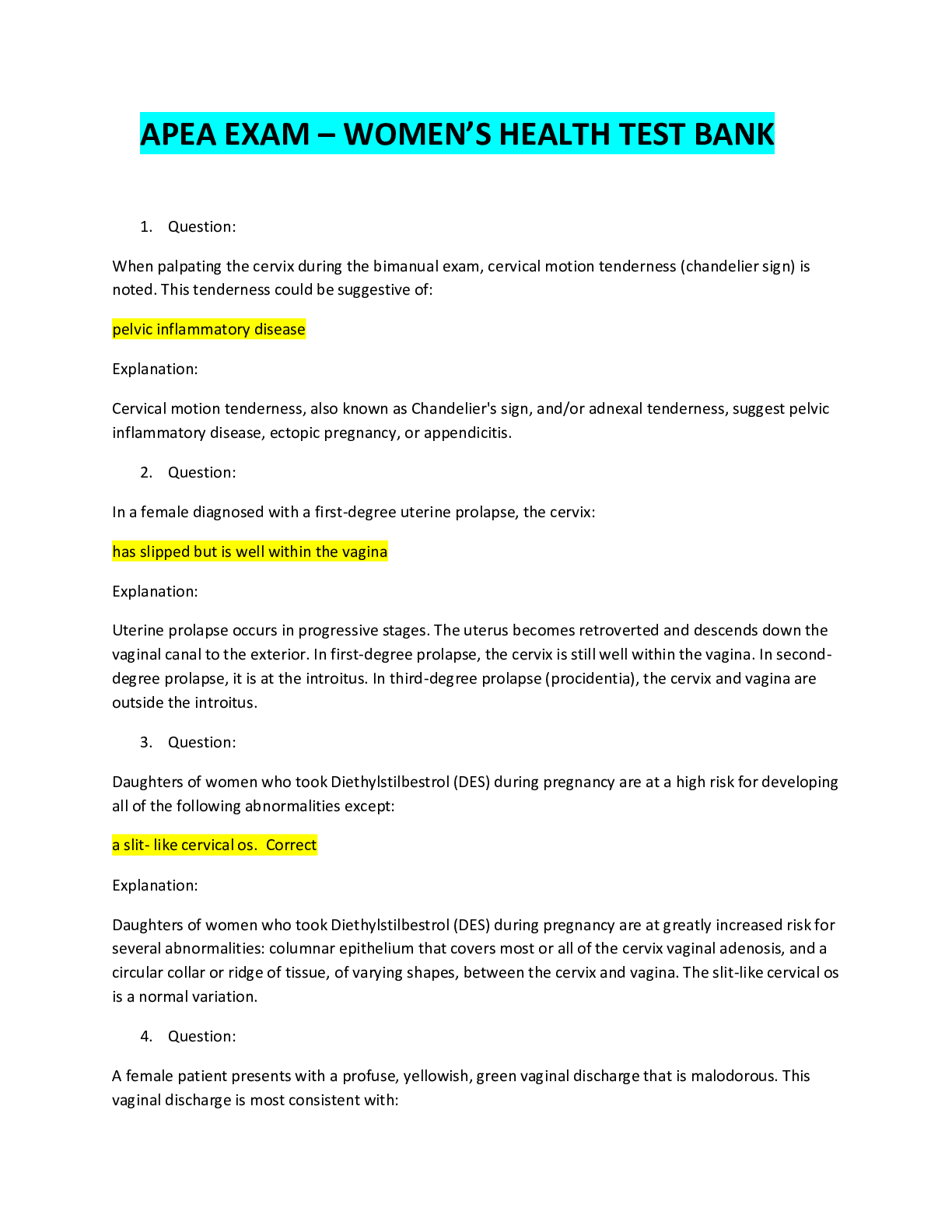

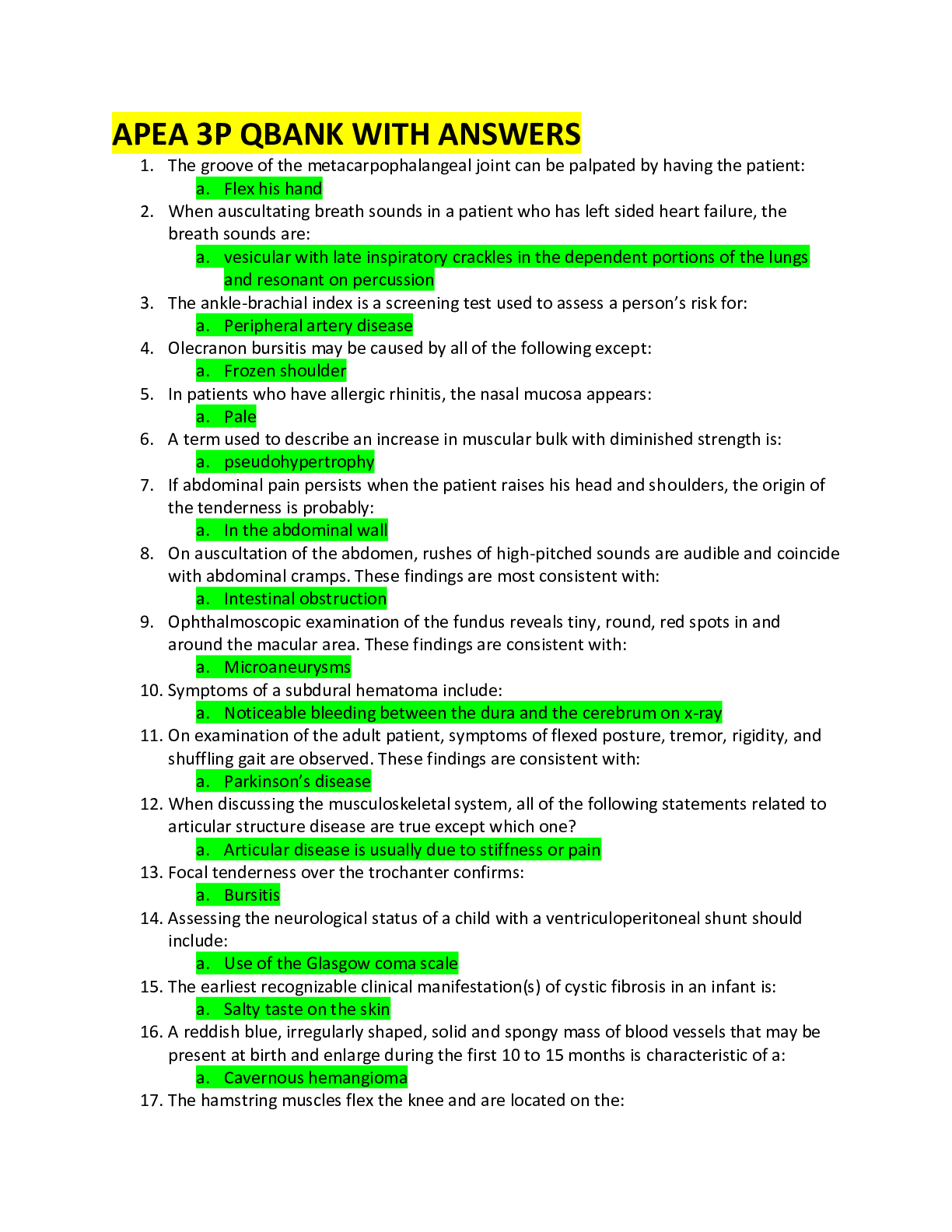
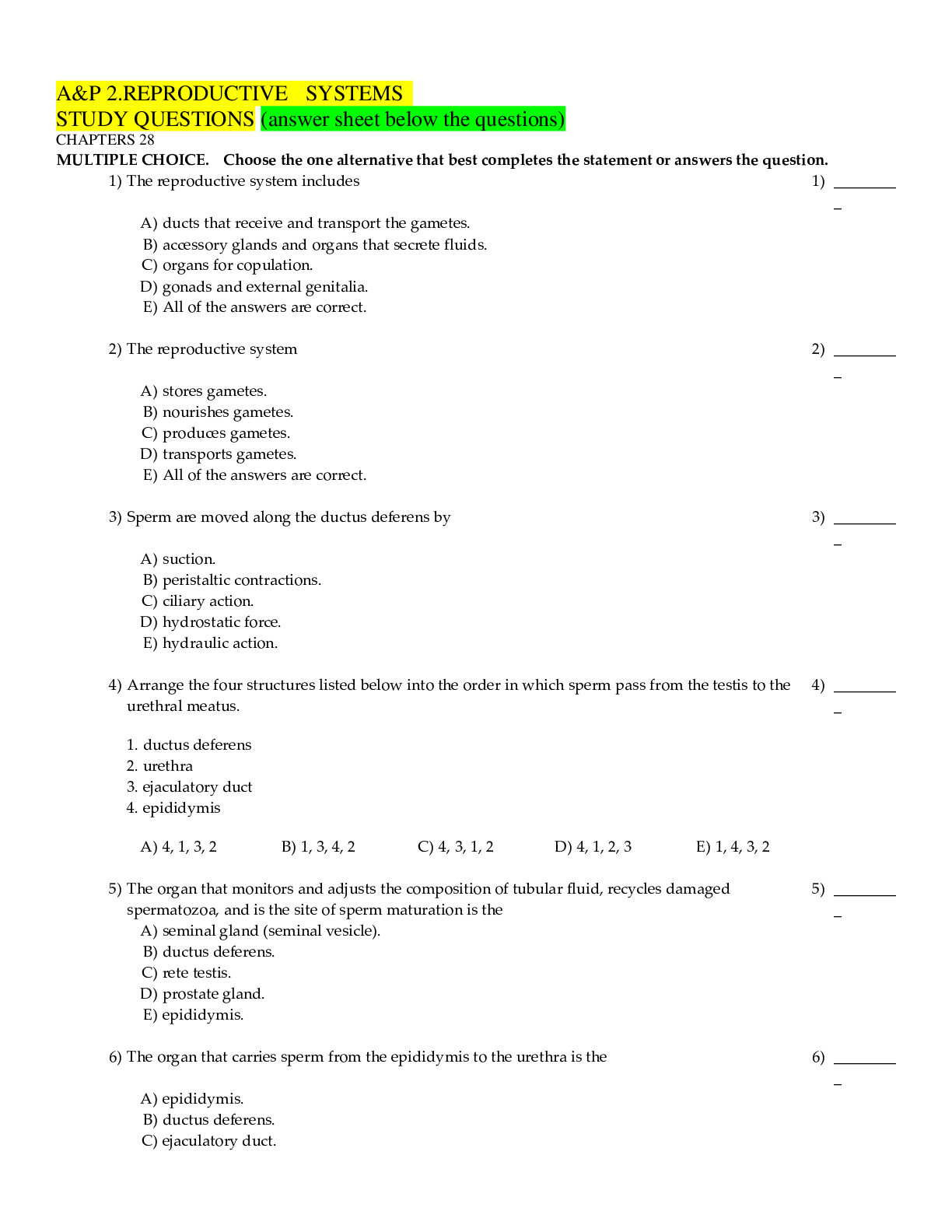


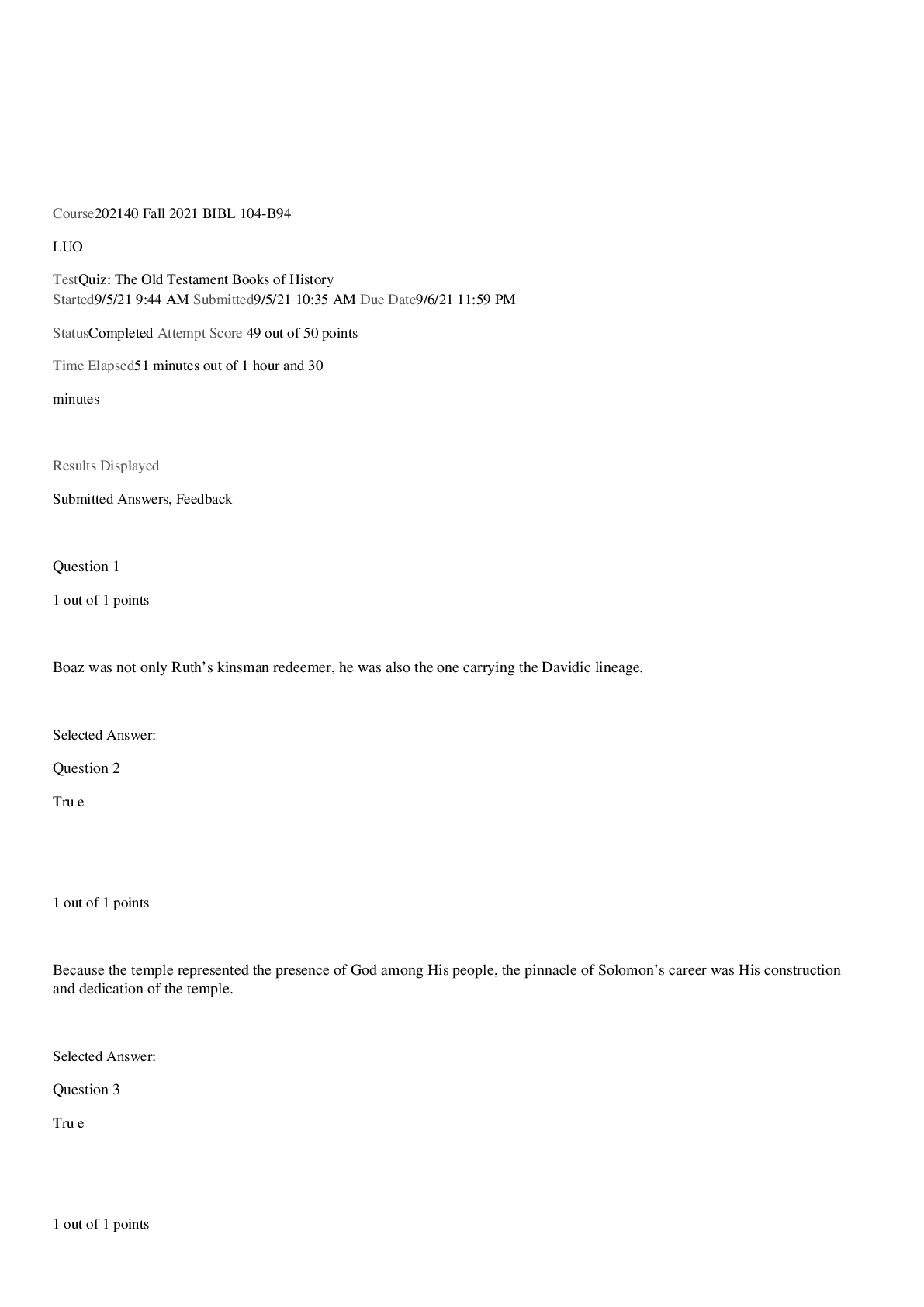
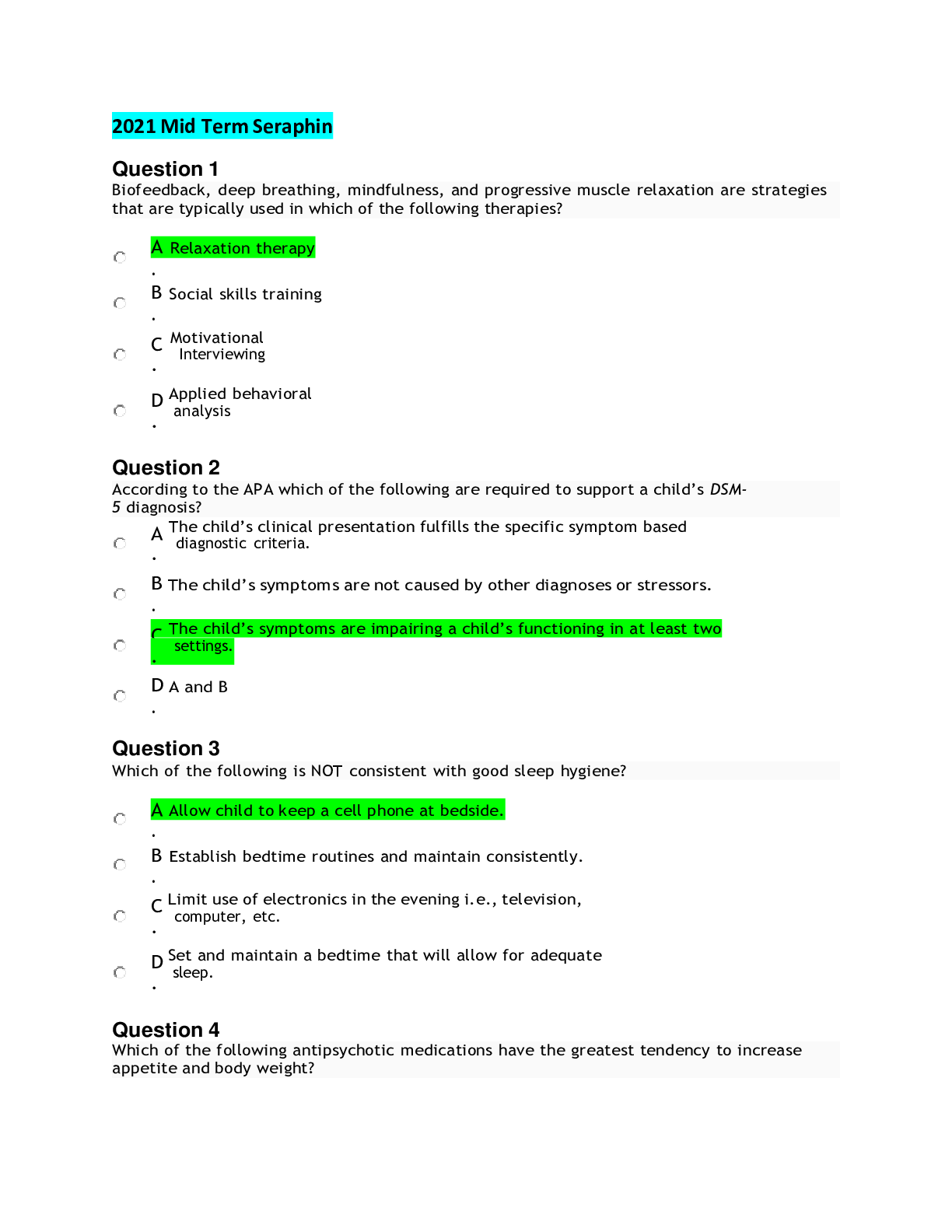

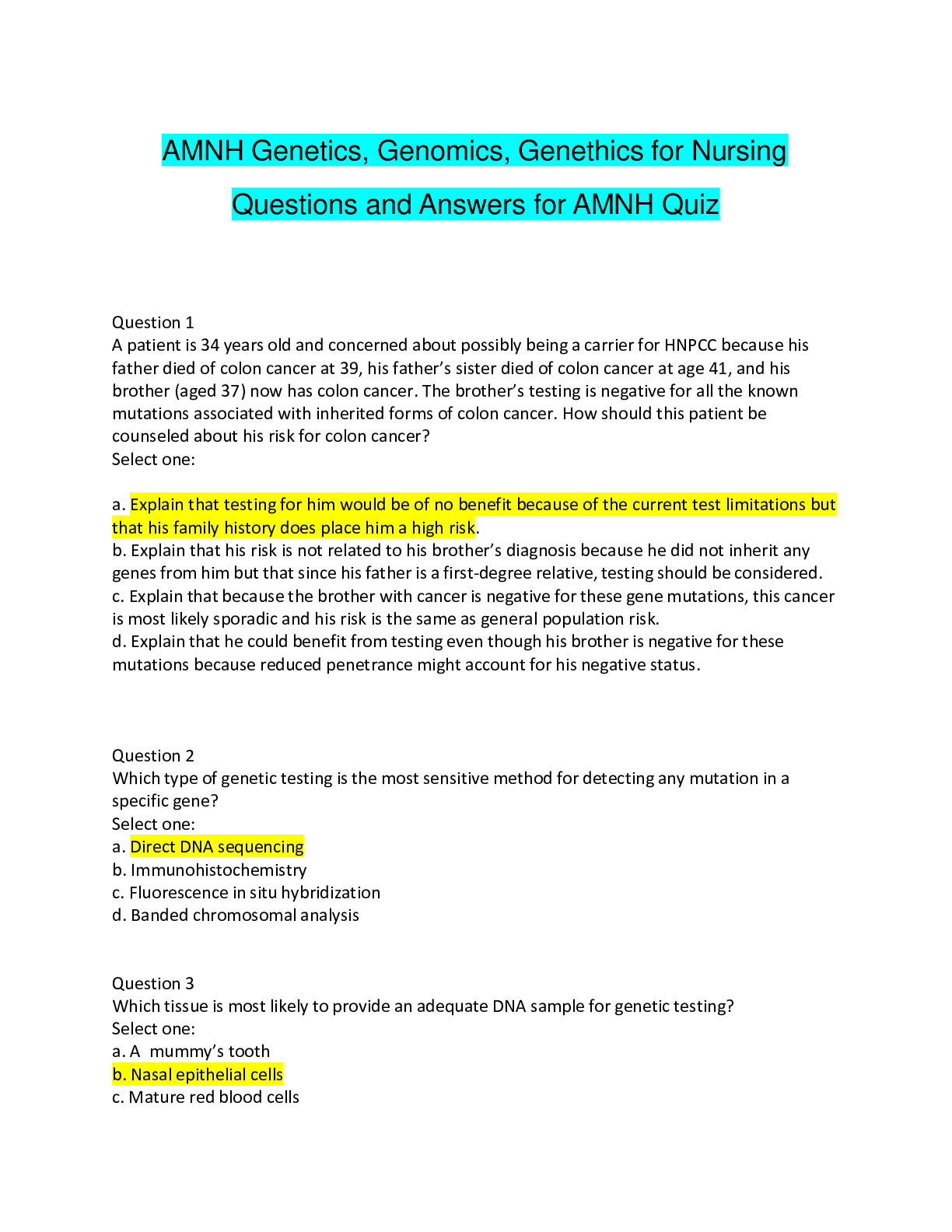
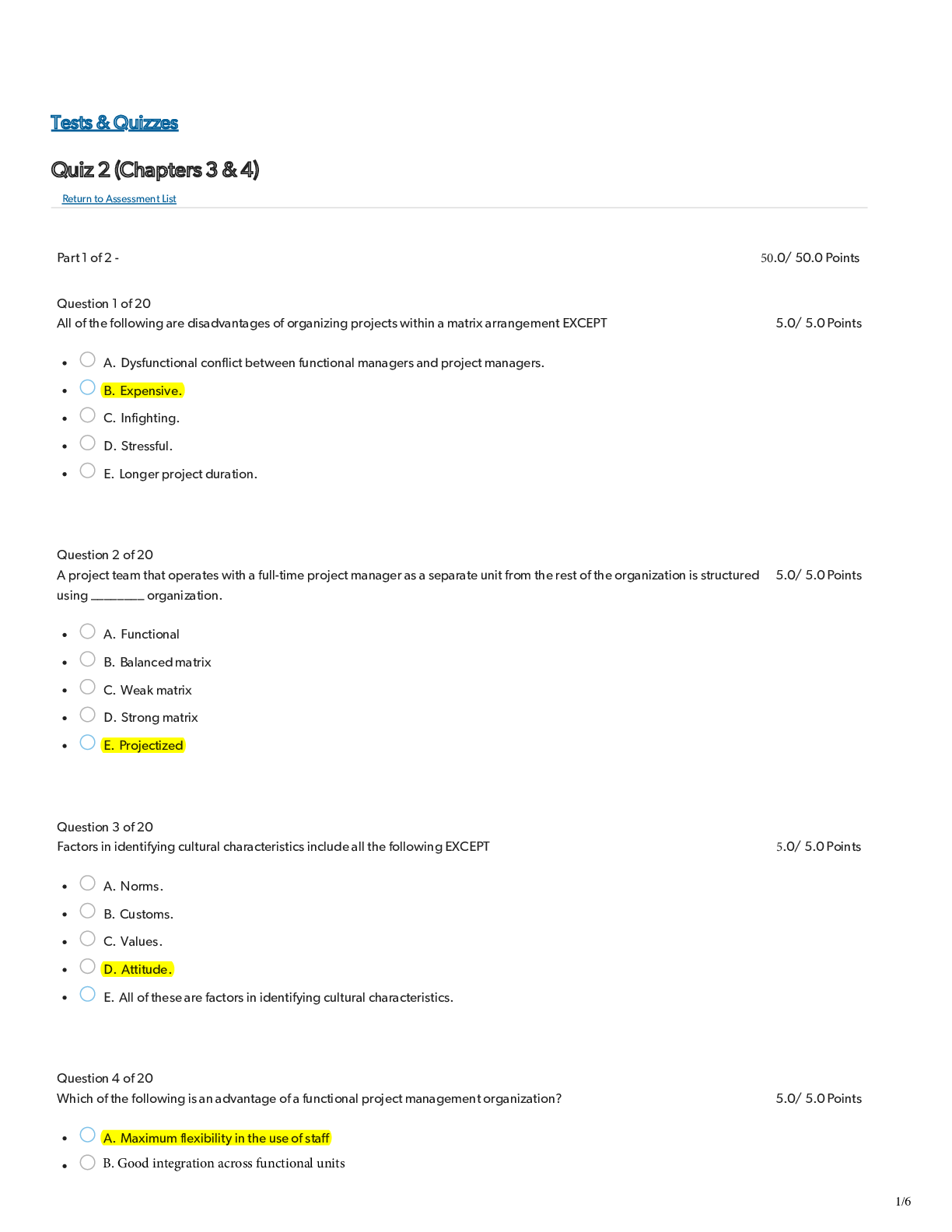
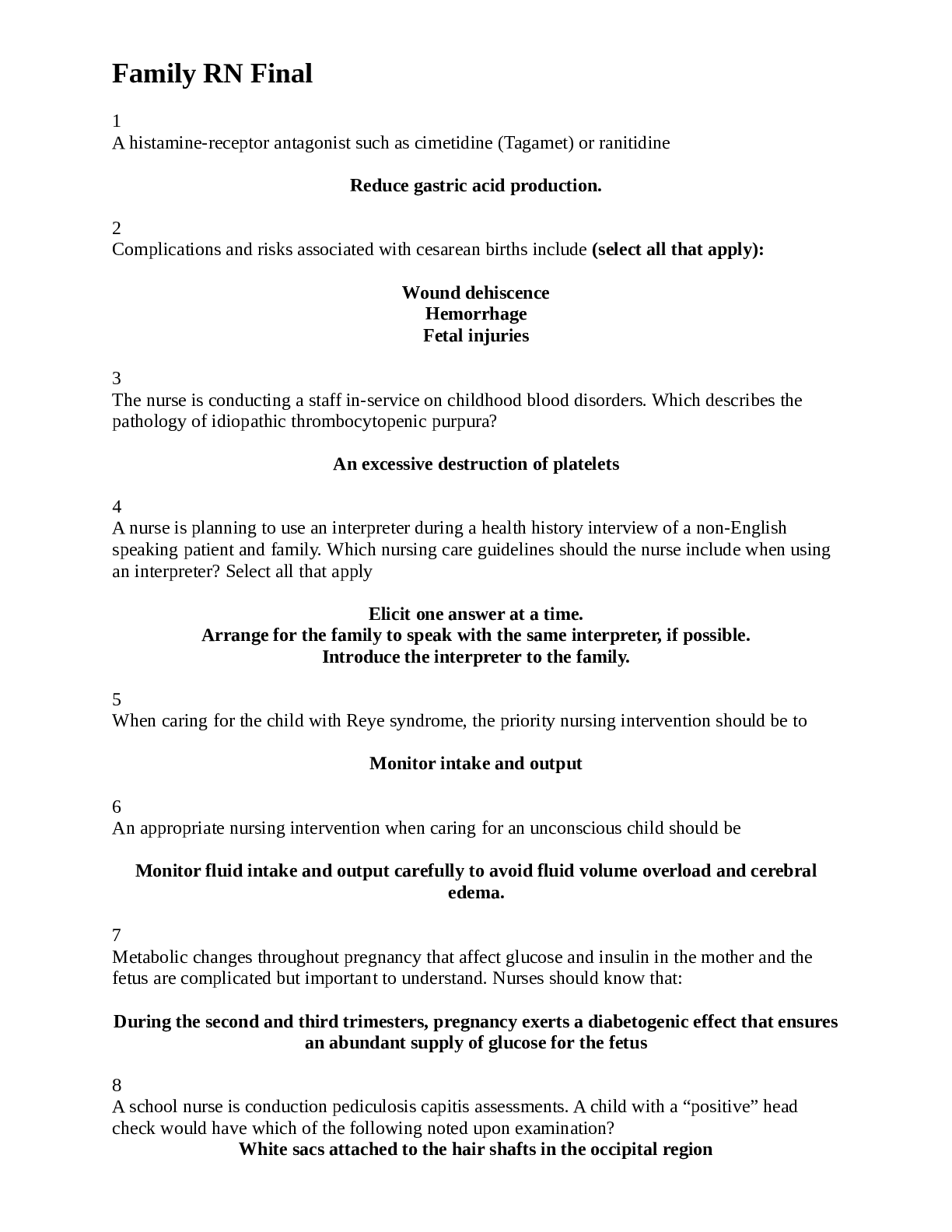



.png)

.png)




.png)
.png)

.png)




.png)
.png)

